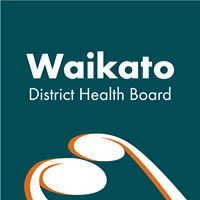Waikato Hospital Pioneers New Procedure
Waikato
Hospital cardiologist Dr Sanjeevan Pasupati and
cardiothoracic surgeon Mr Adam El Gamel have successfully
pioneered a technique to treat one of the most prevalent
heart valve diseases in the Western World.
Aortic regurgitation is a condition where the heart’s main outflow valve fails to close properly. This causes the blood that has already pumped out of the heart to leak back into the heart, such that it must be pumped out again with the next beat.
“The heart stretches to accommodate the extra blood that has to be pumped and becomes strained over time. Patients can become breathless and eventually develop heart failure,” said Mr El Gamel.
Traditionally, replacement of the aortic valve has required open heart surgery. However, 10-15 per cent of patients who need surgery for aortic regurgitation have other conditions that make it dangerous for them to undergo open heart surgery.
Sanjeevan Pasupati_08May2013_0004 Mod“Edwards
HELIO system is the new approach to treating primary aortic
regurgitation,” said Dr Pasupati.
“The Edwards HELIO
system technique involves a cardiologist working from the
leg and a cardiac surgeon working simultaneously through a
small incision on the chest.
“The pair work together to insert an anchoring device (dock) from the leg, to place it outside the patient’s aortic valve. A new valve is passed through the chest and the tip of the heart and placed inside the docking device. The whole apparatus is held in place by the old aortic valve, which is sandwiched between the docking device and the new valve. This procedure corrects the leak and acts as an alternative to major heart surgery,” said Dr Pasupati .
The treatment is an extension of another technique pioneered for New Zealand at Waikato Hospital in 2008 called transcatheter aortic valve implantation. This is used to treat a narrowed aortic valve (aortic stenosis), and involves a new valve being passed up from the leg, arm, or through a minimal incision on the chest.
Until now there was no similar procedure available for aortic regurgitation because anchoring the new valve was a challenge.
Dr Pasupati and Mr El Gamel, who are both involved in teaching the use of transcatheter implantation techniques around the world, worked with Edwards Life Sciences to develop the Edwards HELIO system programme.
Four patients have been treated using this approach in New Zealand. All four patients had a successful valve implantation with significant reduction in the leakage of the aortic valve.
“Remember these were very high risk
patients. All four survived the perioperative period which
is 30 days from the procedure,” said clinical unit El
Gamel+19-02-2010_001best-resizedleader for internal medicine
Dr Clyde Wade.
“During follow-up at 30 days, six and
12 months, all had a significant improvement in their
symptoms.”
Four others have since received similar therapy in Vancouver on compassionate grounds in critically ill patients. The procedure remains experimental and will be further refined in Waikato and two new centres in Germany.
Dr Pasupati presented this pioneering work to 12,000 delegates at the EuroPCR conference in Paris yesterday (Thursday 23 May).
“For untreated severe aortic regurgitation, the 10 year mortality is 34 per cent and in this period 50 per cent would have developed significant heart failure. If they have significant symptoms and don’t undergo corrective surgery 50 per cent will be dead in one to two years, making this a lethal disease on its own merit,” he said.
“It’s a privilege to be a
part of a groundbreaking technology.”
Dr Wade said this
has been “the culmination of a 30 year
journey”.
“We’ve gone from a cardiological
backwater in Hamilton to now being internationally
recognised. This wouldn’t have happened without the
support of the Waikato Heart Trust, the National Heart
Foundation of New Zealand and Waikato DHB,” he said.
The Waikato Heart Trust supported the initial transcatheter valve programme and the National Heart Foundation of New Zealand supported Dr Pasupati’s specialist training.
ENDS



 National Library Of New Zealand: Kate De Goldi Named Te Awhi Rito Reading Ambassador For Aotearoa
National Library Of New Zealand: Kate De Goldi Named Te Awhi Rito Reading Ambassador For Aotearoa Hikoi for Health: Healthcare Crisis Drives Cross-Country Protest | Hīkoi For Health Set To Begin
Hikoi for Health: Healthcare Crisis Drives Cross-Country Protest | Hīkoi For Health Set To Begin University of Auckland: New Zealand Professor's Paper Is One Of Century's Most-Cited
University of Auckland: New Zealand Professor's Paper Is One Of Century's Most-Cited Taite Music Prize: The 2025 Taite Music Prize Winner Is MOKOTRON - WAEREA
Taite Music Prize: The 2025 Taite Music Prize Winner Is MOKOTRON - WAEREA Health Committee: Have Your Say On The Medicines Amendment Bill
Health Committee: Have Your Say On The Medicines Amendment Bill PHCC: Free Vape Kits Won’t Deliver Smokefree 2025 Goal
PHCC: Free Vape Kits Won’t Deliver Smokefree 2025 Goal